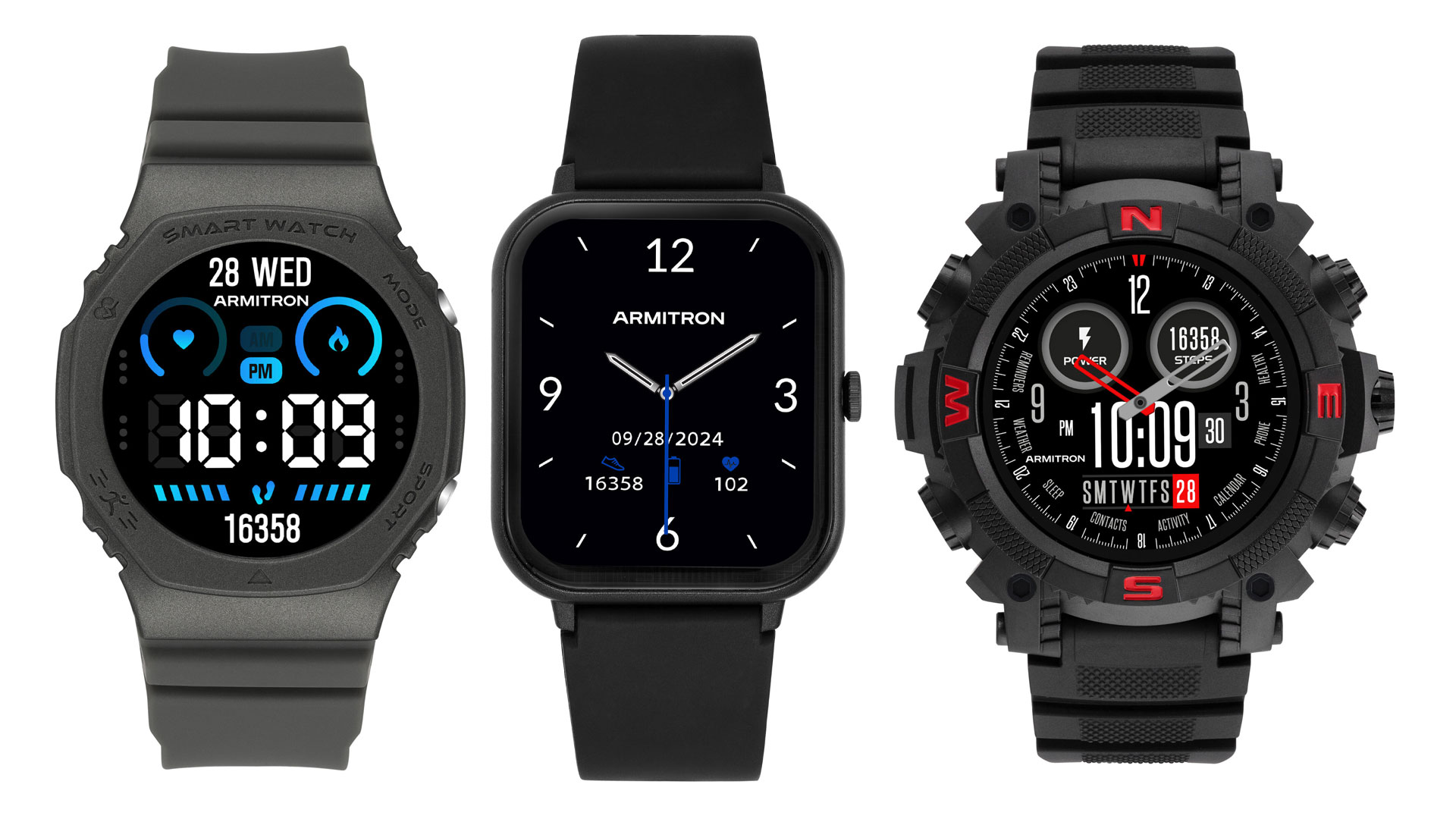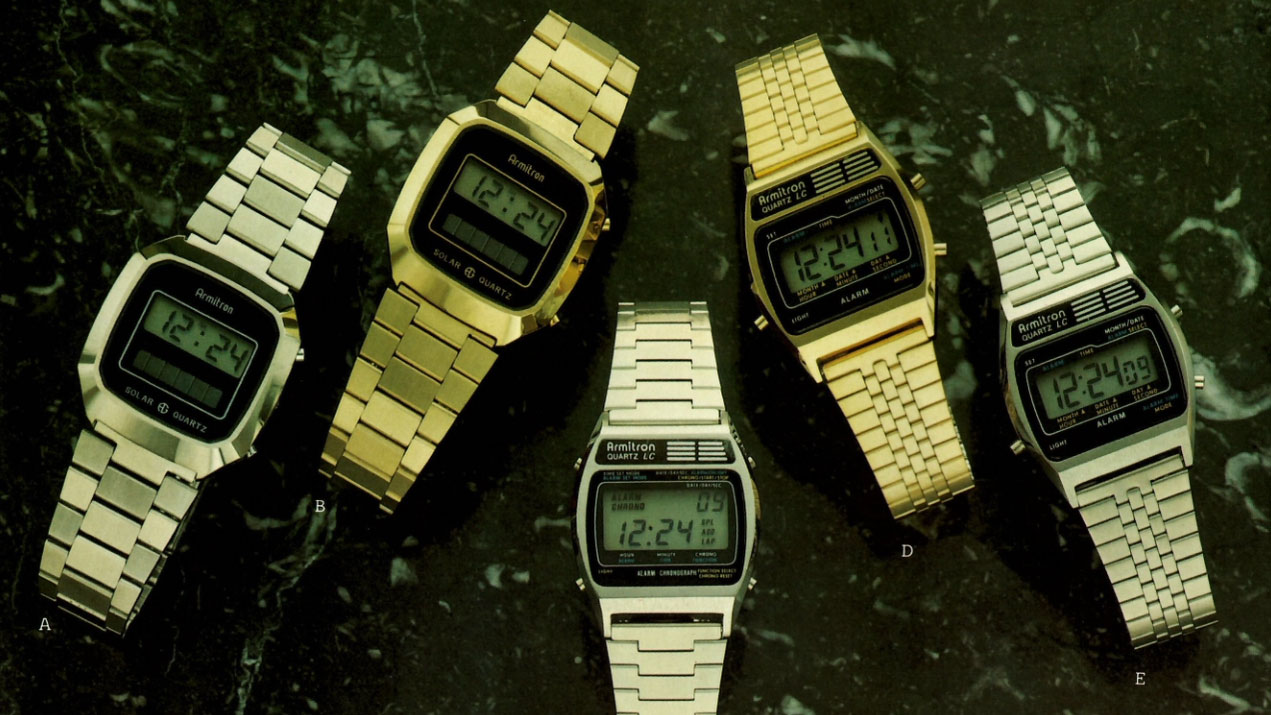
Armitron, the watch company with the tech-leaning name, only introduced its first smartwatch this year, surprising for a company that joined the digital time-keeping age almost fifty years ago.
"Armitron went through this kind of journey where we really spiked in the 70s and 80s and 90s and then kind of went quiet over the last few decades and I think, we saw that there was an opportunity to bring the brand forward again," said Armitron CMO Marisol Tamaro, whom I spoke to recently about the company's Golden anniversary.
Part of the E Gluck Corp (Holocaust survivor Eugen Gluck founded it), Armitron began somewhat auspiciously in 1975 with an early LED watch. It wasn't the first. Pulsar, which introduced the first digital watch in 1972, holds that distinction. Still, most people remember Armitron and its iconic gold-plated timepiece that featured a beefy body and a rather tiny strip of red plastic for the display. Shining through it was the single-line LED readout.
My grandfather owned one of those original LED watches, and it was a big deal back then. He didn't own it for long, though. Early LED technology was incredibly inefficient, and it soon ceded to the more battery-sipping Liquid Crystal Display (LCD).
'we saw that there was an opportunity to bring the brand forward again'
Despite that early digital launch, Armiton didn't build its name on innovation. Instead, it offered a wide variety of LCD, Quarts, and mechanical watches that focused on fashion and affordability. To this day, most Armitron watches cost under $200.
Armitron excels, in fact, at offering more expensive timepieces but at far more affordable prices, and it has carried on that tradition with its smartwatch line. Its Connect Matrix is a $75 alternative to the Apple Watch, the Connect Sync is a $60 Samsung Galaxy Watch Ultra option, and the $75 Connect Quantum could stand next to the Samsung Galaxy Watch or Google Pixel Watch. I wondered, though, if, in this age of wearable innovation, that's enough.

"We're not really a tech-lead, organization, but we are a design-led organization...we're really leaning into what we do well and it's really on the style and design and the aesthetic of a timepiece," explained Tamaro.
"Even when Mr, Gluck decided to introduce the first LED watch," she continued, "it was still with the intent of, 'I wanted to do something great. I wanted to be Innovative, but I also want to make it affordable.'"
Gluck had no trouble over the years disrupting the timepiece norm, but it often took the form of novelty watches that added features like radios and calculators (a personal favorite of mine).
"I think for him it was always trying to find ways to be interesting and relevant and and creating a differentiation at that time," said Tamaro.

Enter the Apple Watch
The watch market, though, has changed in the decade since Apple introduced the Apple Watch. It's, by a wide margin, the market leader in smartwatches and outsold all Swiss-made watches in 2020.
Notably, Armitron is an American watch company and, in 1999, was among the top five US watchmakers. No current numbers are available, but Armitron's move into smartwatches makes it clear how the wind blows.
'As a company we're kind of figuring out like, first of all, do we go there? You know, is that the right thing to do for Armitron?'
"We only just got into the game on that this year. So today, it's a much smaller part of our broader portfolio, but we do see that growing and expanding. As a company, we're kind of figuring out, first of all, do we go there? You know, is that the right thing to do for Armitron?" said Tamaro, who also admitted that their customers were asking about it.
"We found kind of the sweet spot for Armitron, which was marrying our expertise in design with technology and key functionality and doing in a way that was more accessible because not everyone can afford that Apple smartwatch but we can deliver a lot of the same functionalities." said Tamaro.
Certainly, Armitron's watches have the right looks. Its rugged Connect Sync watch has a beautiful display, but TechRadar has yet to test all the functions and can't vouch for Armitron matching, for instance, the capabilities found in a $799 Apple Ultra Watch 2.

Despite its smartwatch newbie status, Armitron is not ruling out the possibility of expanding its wearable portfolio. When I asked about an Armitron Smart Ring, Tamaro, who's been with the company for two years after stints at J Crew and Uniqulo and 16 years at Pepsico, told me, "Possibly, possibly. I wouldn't say it's out of the question."
In the meantime, Armiton is carefully stepping into the future while honoring its past. Its warehouse has a fully stocked archive and has been selling some restored vintage watches. A few years back, it even revived the original LED in the form of the $60 Griffy Watch. Granted, its LED screen is far from the tiny, albeit battery-sucking one of the 1970s. This screen, for one thing, is way larger and can reportedly run on batteries for up to two years.
When I asked Tamaro if Armitron was benefiting at all from people embracing retro technology, like classic Casio and Armitron watches, in an effort to descreenify their lives, she told me, "I don't know if it specifically is screens as much as it is that need to kind of step away sometimes from technology and going back to basics, if you want to call it that. So there does seem to be this kind of renewed interest in either traditional watches or somethign that is more novelty."







